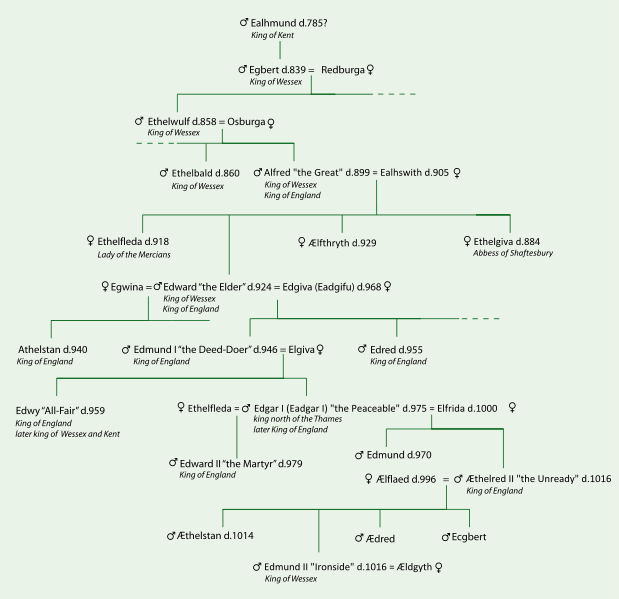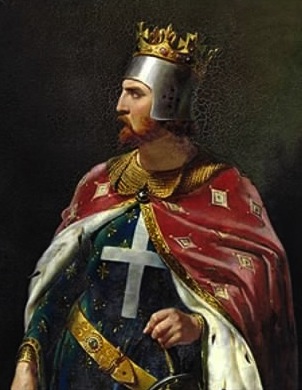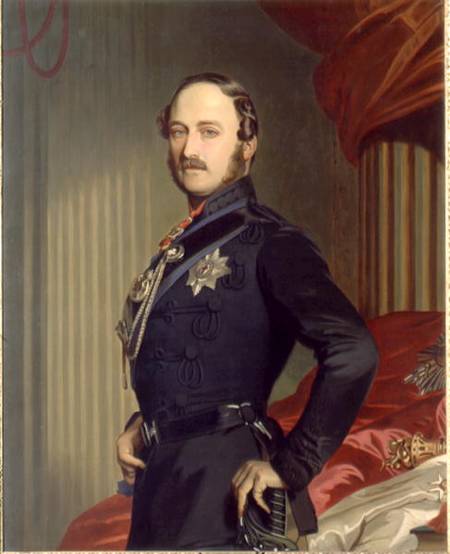Name: King Edmund
Born: c.922
Parents: Edward the Elder and Edgiva
Relation to Elizabeth II: 30th great-grandfather
House of: Wessex
Ascended to the throne: October 27, 940
Crowned: November 29, 940 at Kingston-upon-Thames, aged c.18
Married: 1) Elgiva (2) Ethelfleda
Children: 2 sons Edwy and Edgar
Died: May 26, 946 at Pucklechurch near Bath (murdered)
Buried at: Glastonbury
Reigned for: 5 years, 6 months, and 28 days
Succeeded by: his brother Edred
King of England 939–46. The son of Edward the Elder, he succeeded his half-brother, Athelstan, as king in 939. He succeeded in regaining control of Mercia, which on his accession had fallen to the Norse inhabitants of Northumbria, and of the Five Boroughs, an independent confederation within the Danelaw. He then moved on to subdue the Norsemen in Cumbria and finally extended his rule as far as southern Scotland. As well as uniting England, he bolstered his authority by allowing St Dunstan to reform the Benedictine order. He was killed in 946 at Pucklechurch, Gloucestershire, by an outlawed robber.
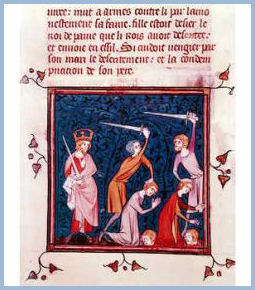
A page from the Anglo-Saxon Chronicle, from which much of our information on the House of Wessex is derived.
Edmund I, known as ‘the Elder’ or the Magnificent, was born circa 921, a son of Edward the Elder and his third wife Edgiva. As a sixteen year old, he had fought with distinction beside his elder half-brother, King Athelstan, at the Battle of Brunanburh against a combined force of Scots and Vikings. Edmund was around eighteen when he succeeded Athelstan on England’s throne in 940
The Danish leader, Olaf Guthrithson, took York, supported by the infamous renegade Wulfstan, Archishop of York. Edmund besieged Olaf and Wulfstan at Leicester in 943. The King, supported by Odo, the Danish Archbishop of Canterbury, forced Olaf to accept his overlordship and agreement was eventually reached between the two opposing parties that Edmund was to rule the south and Olaf was to retain possession of all the area north of Watling Street. On the death of either, the survivor would inherit the whole country.
Fortunately for Edmund, Olaf died the following year and the English King invaded Northumbria in 944. He marched a combined army of English and Welsh into Strathclyde, whose ruler, the renegade Donald or Dunmail had supported Olaf. Edmund conquered the province, which in 946 he ceded to Malcolm I, King of Scots on agreement that the latter should become his vassal. A peace treaty was signed between the two nations, ensuring mutual military support, Dunmail, the last Celtic King of Cumbria was killed in battle, his sons mutilated and Cumbria became a fiefdom of the recognised heir to the Scottish throne.
Edmund married firstly to Elgiva and the couple produced three children, a daughter and two sons, Edwy and Edgar. After her death in around 944, Elgiva was canonized by the church. Edmund married for a second time in 946 to Ethelfleda, the daughter of Alfgar, Ealdorman of Wiltshire, but the marriage produced no children, after the death of her husband she took the veil and became a nun at Shaftesbury Abbey in Dorset.
Edmund’s promising reign was cut violently short after only six years. On the Feast of St. Augustine, 26th May, 946, a great festival among the Anglo-Saxon peoples. During the course of revelries to celebrate the event at Pucklechurch, in Gloucester, Edmund, being none the better for the large amount of wine he had consumed, became angered at the presence of one Liofa, an outlaw whom he had expelled from the kingdom a few years previously.
Angered beyond endurance at what he saw as an outrage against his authority, the King flung Liofa to the ground in fury and in the ensuing struggle the Edmund was fatally stabbed by the outlaw.
Edmund the Elder was twenty-five years old when he was killed and was buried at Glastonbury Abbey in Somerset.
Death and succession
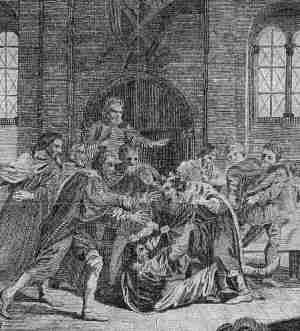
“The Murder of King Edmund at Pucklechurch”, drawn by R. Smirke, published in Ashburton’s History of England, 1793
On 26 May 946, Edmund was murdered by Leofa, an exiled thief, while attending St Augustine’s Day mass in Pucklechurch (South Gloucestershire).[4] John of Worcester and William of Malmesbury add some lively detail by suggesting that Edmund had been feasting with his nobles, when he spotted Leofa in the crowd. He attacked the intruder in person, but in the event, Leofa killed him. Leofa was killed on the spot by those present.
Edmund’s sister Eadgyth, wife to Otto I, died (earlier) the same year, as Flodoard’s Annales for 946 report.
Edmund was succeeded as king by his brother Edred, king from 946 until 955. Edmund’s sons later ruled England as:
Eadwig of England, King from 955 until 957, king of only Wessex and Kent from 957 until his death on 1 October 959.
Edgar of England, king of only Mercia and Northumbria from 957 until his brother’s death in 959, then king of England from 959 until 975.
Geanealogy: Ancestors of Edmund I of England
| Timeline for King Edmund |
| 940 | Edmund becomes King. Scandinavian forces from Northumbria overrun the East Midlands. |
| 942 | Edmund re-establishes control over Northumbria and rules a united England. |
| 943 | Edmund extends his rule into southern Scotland, |
| 945 | Dunstan becomes abbot of Glastonbury Abbey |
| 945 | Edmund conquers Strathclyde, but Cumbria is annexed by the Scots. |
| 946 | Edmund murdered at a party in Pucklechurch |
Credits:
http://www.englishmonarchs.co.uk/
http://www.britroyals.com/
Wikipedia



